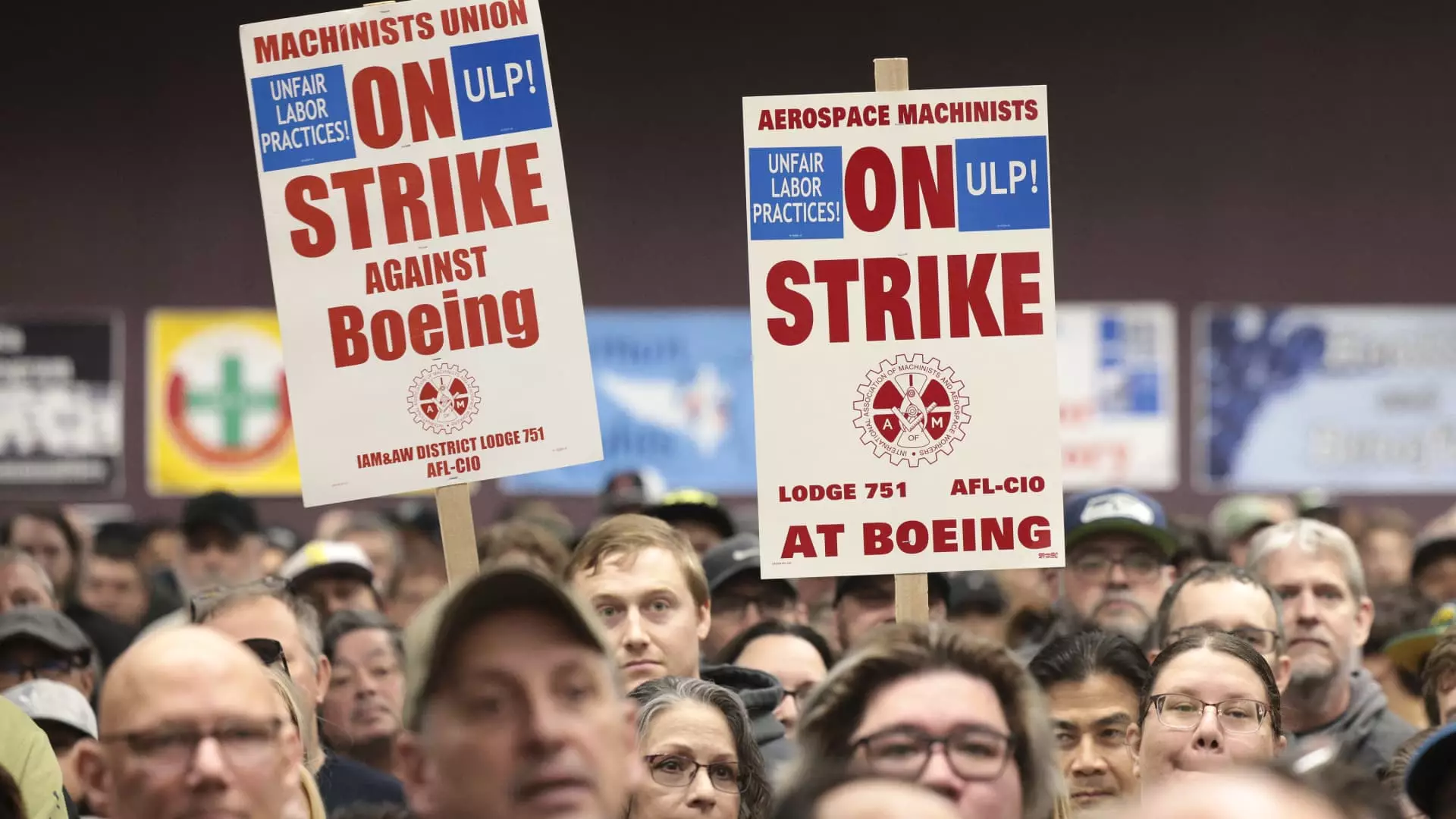The recent decision by Boeing machinists to reject a proposed labor agreement highlights significant tensions within the labor market, central to which is the struggle between worker compensation and the financial health of one of America’s most iconic corporations. As the machinists’ strike progresses, it presents critical insights not only into Boeing’s operational challenges but also into the broader economic implications that extend beyond the aircraft manufacturer itself.
The rejection of a contract featuring a 35% wage increase over four years—endorsed by 64% of voters—marks a pivotal moment for Boeing and its machinists, who have not embarked on a strike since 2008. The International Association of Machinists and Aerospace Workers originally proposed a 40% wage hike, highlighting that the demands were set against a backdrop of escalating living costs in the Puget Sound area. This ongoing labor strife underscores the critical role of unions in advocating for workers’ rights and economic justice, particularly in industries where profits can fluctuate dramatically.
Labor negotiations are a delicate balancing act, and the current standoff illustrates the disconnect between corporate priorities and workforce expectations. Jon Holden, the president of IAM District 751, cautioned that although negotiating advances had been made, they fell short of meeting the members’ expectations. This discord not only affects the immediate parties involved but could have long-term ramifications for workforce morale and productivity, essential components for any company operating in a competitive landscape.
Boeing’s situation is exacerbated by its financial struggles, recently reporting a staggering $6 billion quarterly loss—the highest since 2020. The ongoing strike, which is estimated to be costing the company around $1 billion monthly, risks further destabilizing an already fragile business model. The new CEO, Kelly Ortberg, finds himself in a challenging position, striving to halt cash burn while simultaneously addressing employee concerns. The current labor tensions come as Boeing attempts to recover from years marred by safety and quality oversight issues, a burden made heavier by recent scandals in which safety protocols were under scrutiny following in-flight incidents.
Boeing’s choice to proceed with workforce reductions, targeting a 10% cut of their global employment, suggests that the corporation is attempting to streamline operations to weather economic uncertainty. However, such measures can further alienate labor, leading to protracted disputes that cloud the company’s recovery efforts. Acknowledging the depth of the challenges ahead, Ortberg emphasized the need for unity and constructive dialogue, acknowledging that a harmonious relationship with its workforce is vital to the company’s rebirth.
The ramifications of the machinists’ strike extend beyond Boeing itself, reaching into a fragile aerospace supply chain. With aerospace manufacturers grappling with the aftereffects of the pandemic and subsequent staffing shortages, delays in Boeing’s production can have significant ripple effects, impacting suppliers like Spirit AeroSystems. The potential for furloughs and layoffs at these suppliers only adds to the urgency of resolving the strike.
The labor shortage in the aerospace sector amplifies the need for a swift resolution to this crisis. Suppliers, already facing their own operational challenges, may find themselves unprepared to scale back operations consistently, leading to employment instability within the broader economic ecosystem.
As the strike continues, it prompts critical discussions regarding corporate accountability and worker rights. The future trajectory of Boeing will rely on its ability to address its labor concerns and pivot from its past mistakes. A realistic approach to negotiations that considers the immediate economic realities faced by workers while balancing corporate sustainability is necessary.
The Boeing machinists’ strike encapsulates the growing pains of a corporation wrestling with its legacy while navigating an evolving economic landscape. This conflict serves as a case study in how labor dynamics shape not just a company’s financial health but also its moral and ethical standing within society. It is imperative that Boeing takes decisive action to restore equilibrium not only within its own ranks but also throughout the wider aerospace industry, ensuring that both employees and the corporation can thrive in tandem.

